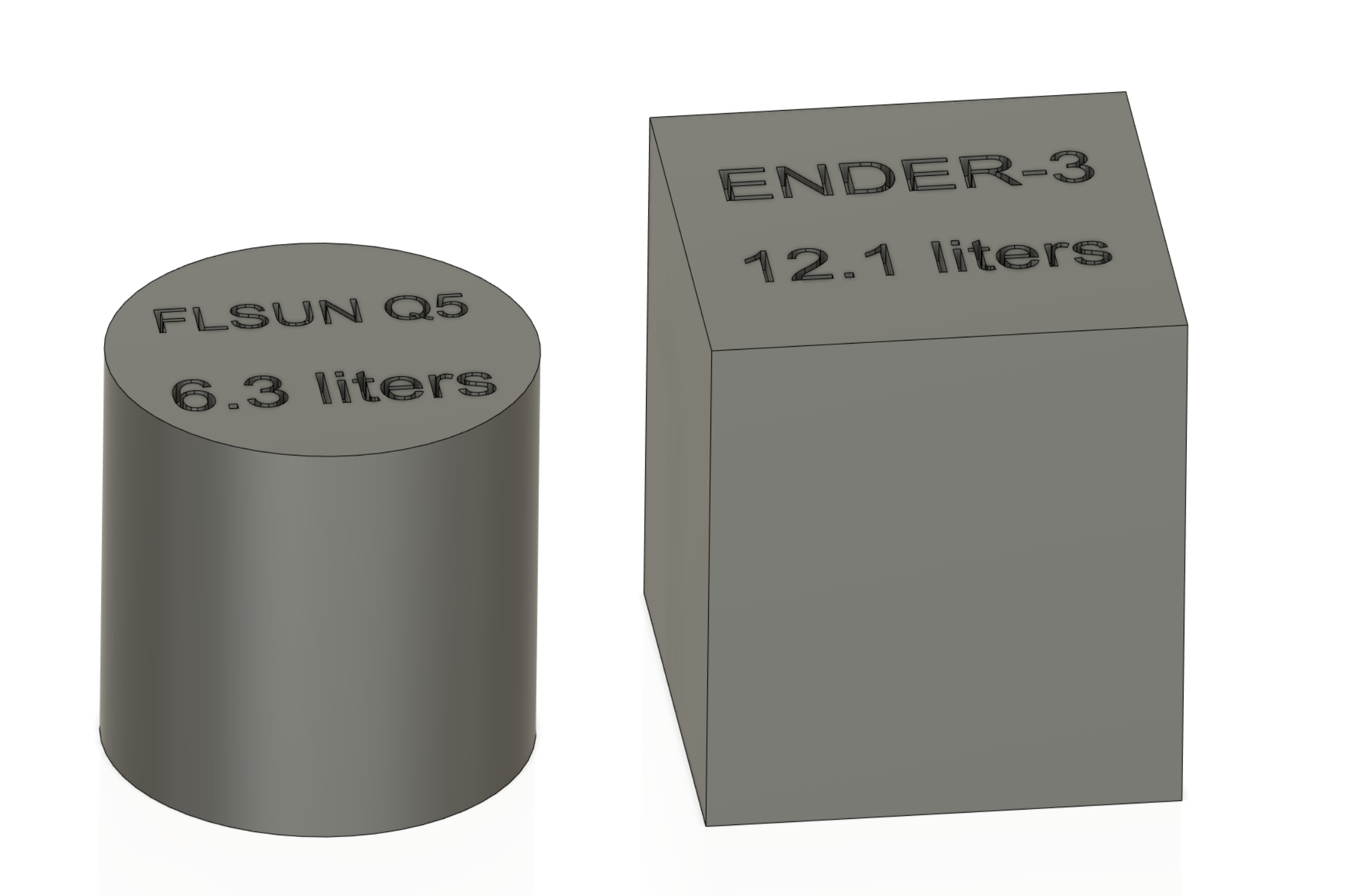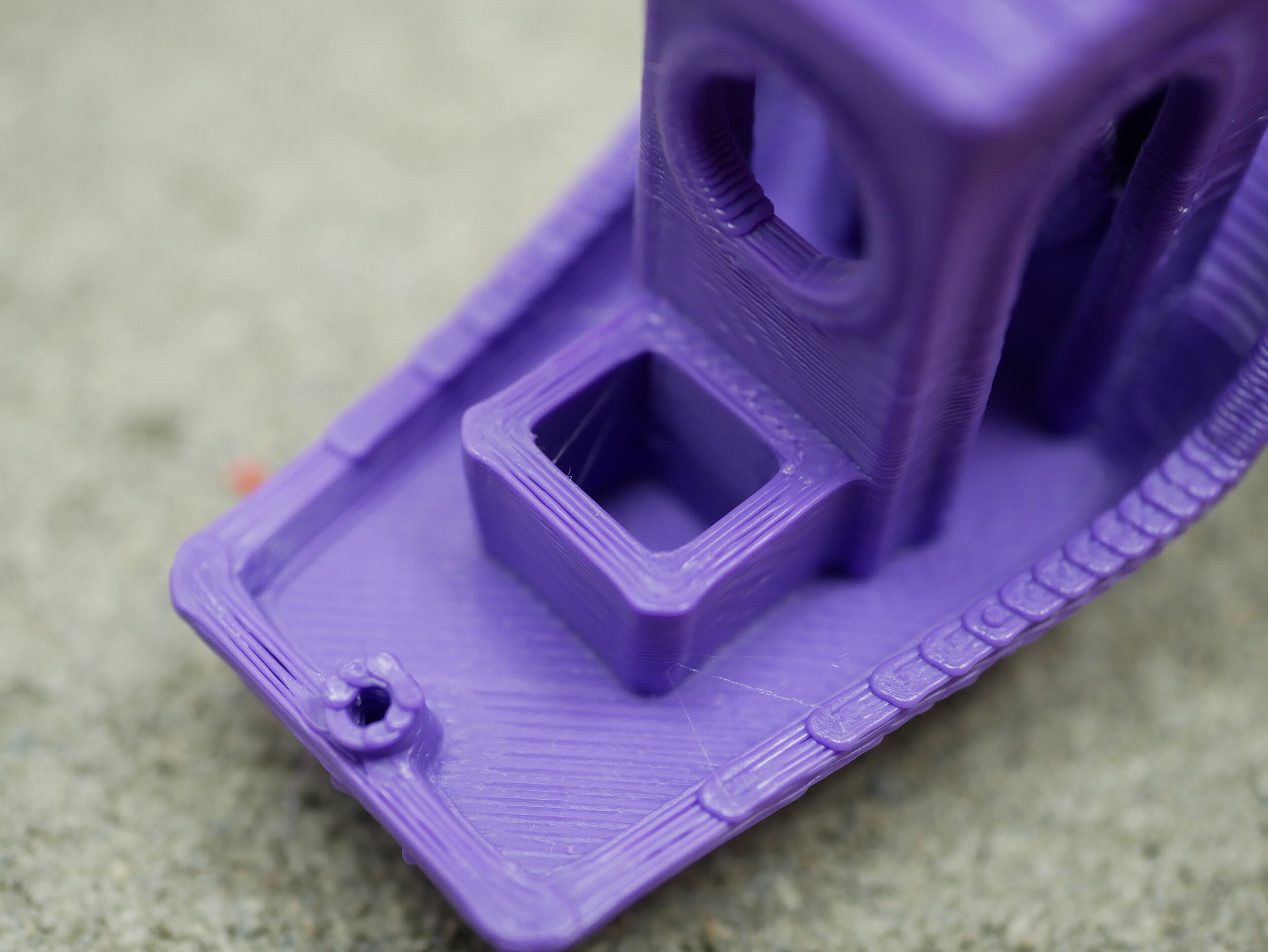FLSUN Q5 Delta 3D printer review
Believe it or not, but this is my first delta 3D printer that I’ve ever used and this is also why I was really excited to get my hand on the FLSUN Q5. A delta printer is mainly different from a classic, cartesian 3D printer due to the way it moves the printhead. In order to move the nozzle to a specific location even only on one axis, all 3 stepper motors need to move the vertical slides in a coordinated manner. This does look very mesmerizing and allows you to move the printhead very quickly, though comes with added computational effort and, in the past often difficult calibration.
🛒 Check the best deals (Affiliate Links):
FLSUN Q5 on AMAZON: https://geni.us/EJz4
FLSUN Q5 on Aliexpress: https://geni.us/wgLE3j
FLSUN Q5 on Banggood: https://geni.us/1p1AgOO
FLSUN Q5 on Gearbest: https://geni.us/orPQV
The FLSUN Q5 comes in quite a small box in comparison to machines like an Ender 3 for example. Obviously, you need to partly assemble it and plug in some cables. The box contains everything you need, including a decent manual, tools, a piece of packing foam that perfectly fits below the printer to decouple it from the table for less noise and even a small sample of PLA filament of questionable quality. Even though it’s a kit printer, assembly is pretty straight forward and one of the most pleasant ones, without any hiccups, that I performed in a while. A minor but notable thing is that you only need to use one screw type and length, which makes the process even easier. Good job on reducing the bill of materials. In the end, you plug in a couple of well-marked wires and fix the wire harness to the Bowden tube with a couple of zip-ties. All in all that took me around 30 minutes at most. Before the first print, you perform the calibration and bed leveling procedure with the detachable, magnetic probe, and you’re ready to go.
Box content
The print volume that you get is 200mm in diameter and 200mm in height. This is plenty for 90% of the parts I print, but if you compare it to its competitor in that price range, the Ender 3, it’s in terms of volume only around half. I also noticed that the 200mm are only usable in the center of the printer, due to its kinematics and it’s rather only 190mm at the edge. The carriages use the typical v-slot rollers that run in aluminum extrusions and they are driven by 3 stepper motors that sit in the top. Tightening the belts is a bit fiddly but still better than on some other printers. The effector is linked to the carriages with carbon rods that have ball ends glued to it, and it doesn’t show any noticeable play. I oiled them a little for even smoother operation. The rest of the frame is sheet metal with all of the electronics sitting in the top portion of the machine. This makes the printer a bit top-heavy and also not the most rigid, though I haven’t noticed problems during printing due to this design.
Print volume comparison
The heated print platform is made from glass and features a ceramics coating which makes prints stick really well to it, in my opinion, sometimes even too well, though for PLA it does even work at 40 to 50°C, which reduces energy consumption and heat-up times. The filament feeding system is Bowden-style, with a Titan clone feeder up at the frame and a V6 Lite style hotend on the effector, where the Bowden tube reaches all the way to the nozzle. This limits printing temperatures to around 250°C and therefore also the type of filaments you can use. The cooling fan is really whiny and annoying and would probably be the first upgrade to make the machine more pleasant in use. I had the impression that the drag of the filament in the Bowden tube was quite high, and the feeder sometimes struggled, showing that in under extrusions. Increasing the tension helped a little, though still not an optimal solution.
Let’s now take a look at the electronics. They are, on paper, really nice and easily accessible from the top. The FLSUN Q5 uses a compact 24V power supply, which is located in the center. The Makerbase Robin Nano V1.2 uses a 32bit ARM microcontroller and has four replaceable stepper motor drivers. All are silent TMC2208s only the one for the feeder is probably an Alegro 4988 or similar and, therefore, noticeable during printing, especially during retractions. The board runs a proprietary firmware that’s supposedly not based on Marlin and, therefore, also not easily editable and upgradable. There is, fortunately, a configuration file available where you’re able to change settings like federate and accelerations, but features like linear advance, that might be very important for fast printing can’t be activated. I have tried to get Marlin 2.0 running on my machine and even succeeded, at least partly, after a while. For one reason or another, I unfortunately still wasn’t able to get printing working properly and the printhead always only stuttered around. I gave up frustrated after a couple of hours and went back to the stock firmware that’s available on the included SD card. Some others seem to have been more successful in that regard and I’ll link them below. Still, also with the experience of that particular mainboard in my Sapphire Pro, I think it’s horrible and should be replaced if you want to get more out of the printer! Finally, the 2.5-inch color touchscreen is located in the front and uses a nice and responsive graphical user interface. Not the biggest one, but it does its job well and let’s you tune, at least some settings, even during printing.
Electronics enclosure
In terms of smart features, there is the detatchable bed probe that works really well and I don’t mind attaching it manually. There is power loss recovery and thermal runaway protection is also activated by default. Unfortunately, no filament runout sensor is delivered with the printer, though should be easily attachable to the mainboard as an upgrade.
Detachable bed leveling probe
But let’s talk about print quality. I struggled a bit in the beginning but after tuning my PrusaSlicer profile properly, the machine was able to produce some really nice looking prints. Part cooling is a bit underpowered, so overhanging structures don’t always look great but that could easily be fixed with a better fan and shroud. Accuracy can be a problem with delta 3D printer if they are not calibrated correctly, but my shape-test looked good, with straight edges and decent dimensions. The stepper motor drivers do a good job and don’t cause any salmon skin effect on this nice, lumpy bumpy vase. Though here we can see another problem of the mainboard because the part shows these blobs from time to time, where the controlboard doesn’t seem to be able to handle the movement commands in a consistent manner. The printhead slows down for a short period of time, which results in over-extrusion and those blobs. We get the same effect if we use the touchscreen while printing. Since the screen is handled directly by the mainboard and doesn’t have it’s own controller, the print moves get stuttery if the processor is busy updating the screen and causes artifacts. Another reason to get rid of the Robin Nano.
Very nice Deadpool Bust by Eastman
Let’s quickly talk about speed, because that’s one of the reasons people buy delta printers. On paper, the machine can definitely go fast, but if you’re not printing giant parts, you’re really hindered by the maximum stock accelerations of 1000mm/s². Also, the lack of linear advance results in nasty over and under extrusion artifacts at fast speeds. Changing accelerations in the config file to 5000mm/s² can increase real printing speeds quite a bit and lower extrusion problems but in the end, I still ended up setting speeds for my prints to 40-50mm/s for optimal quality.
Under-extrusions and artefacts when printing fast
Some might know that I’m always concerned about noise and the FLSUN Q5 could easily be better in this regard, because the only whiny fan is the one on the hotend. In the stock configuration, it’s too annoying for my office and working directly next to it. If you find a more quiet fan here, it could be a really pleasant machine to listen to because movements are quiet due to the TMC2208 drivers.
So is the FLSUN Q5 worth it’s around $200 and how does it compare to it’s obvious competitor, the Ender 3 and it’s derivatives? It does have a significantly smaller print volume and print quality even though good, doesn’t reach the one of the Ender 3 V2 for example. Usability with the bed leveling probe and the color touch screen is really nice but the electronics are not the best, with stutters during printing and hassles if you want to upgrade and tune the firmware. Still, the outstanding point of the FLSUN Q5 is, that in comparison to the Ender 3 it’s the better delta printer, because the Ender 3 is just not delta printer. What I mean with this, is, that if you’re looking particularly for a cheap Delta printer the FLSUN Q5 is not a bad choice. Assembly is simple, calibration works fine and if you don’t want to do anything fancy, the printer will give you usable print results. Though honestly, if you’re looking for less of a project and a reasonably priced printer that is better usable right out of the box and doesn’t have to necessarily be a delta, maybe rather consider and Ender 3 or similar.
Though I think the best use for the Q5 might be to use it as a hardware platform. Almost everything besides the mainboard is really usable. Toss the Robin Nano out and replace it with something more capable, like a more advanced Makerbase MKS or even a Duet board. This will give you the possibility to use the delta printer to its full extend and you’ll still end at around the price of other reasonably priced printers. But what’s your verdict? Just another machine that was only engineered 90% or a really good printer for its price? Let’s discuss down in the comments! Just as a disclaimer. I got this printer sent by FLSUN for free as a review unit though don’t get paid for making this review. If you’re interested in the machine and want to support the channel, there are affiliate links down in the description.
Marlin 2.0 for the FLSUN Q5: https://github.com/jnordberg/Marlin
🛒 Check the best deals (Affiliate Links):
FLSUN Q5 on AMAZON: https://geni.us/EJz4
FLSUN Q5 on Aliexpress: https://geni.us/wgLE3j
FLSUN Q5 on Banggood: https://geni.us/1p1AgOO
FLSUN Q5 on Gearbest: https://geni.us/orPQV
Ender-3 PRO (~$200)
Directly from Creality: https://geni.us/r7I5
Banggood: https://geni.us/u0todSj
AMAZON: https://geni.us/ZmOa3
Gearbest: https://geni.us/N0IFh
3DJake(EU): https://geni.us/4VvGDe
Matterhackers(US): https://geni.us/ZQ4Fc
Ender-3 V2 (~$260)
Banggood: https://geni.us/lbhfVU
AMAZON: https://geni.us/9k7MKs
Gearbest: https://geni.us/JmdFYNN
Directly from Creality: https://geni.us/WLRS
Aliexpress: https://geni.us/ijtt
3DJake (EU): https://geni.us/LN6lZ






